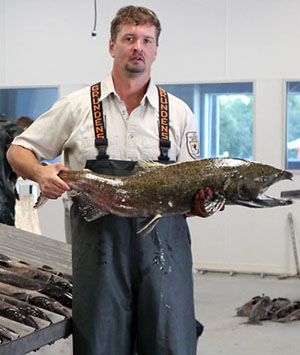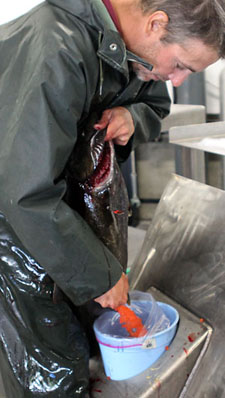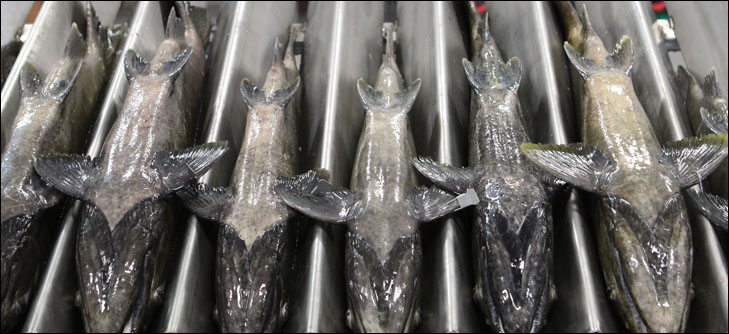home | internet service | web design | business directory | bulletin board | advertise | events calendar | contact | weather | cams

 Matt Hall, a biologist from the U.S. Department of Fish and Wildlife's Wenatchee office holds a 15 pound spring Chinook that would have weighed about 25 pounds as it began to muscle its way up the Columbia River towards its Methow spawning. Matt Hall, a biologist from the U.S. Department of Fish and Wildlife's Wenatchee office holds a 15 pound spring Chinook that would have weighed about 25 pounds as it began to muscle its way up the Columbia River towards its Methow spawning.
600,000 Salmon Some 220 spring Chinook salmon pairs spawned this month with a little help from their friends at the U.S. Fish and Wildlife Service hatchery in Winthrop. The next opportunity for the public to watch hand-spawning of salmon from the viewing room in the hatchery’s new spawning facility won’t be until Coho are processed in late October, said hatchery manger Chris Pasley.  Bob Gerwig removes salmon eggs from a female spring Chinook. Bob Gerwig removes salmon eggs from a female spring Chinook.They’ll be back in 2016, providing they survive the perilous journey out to sea, unpredictable ocean conditions and the daunting journey home past nine dams on the Columbia River. A few will come back as three-year old males, so-called “Jacks.” As many as 20 percent of them may wait five years to come back. That’s Mother Nature’s biological insurance policy. Should something calamitous wipe out the bulk of the fourth-year returnees, there still would be a remnant population. The hatchery has never had more than a .03 to 1 percent return rate, Pasley said. “I think it’s pretty comparable to most other spring Chinook runs on the Columbia,” he added, especially given the extra number of dams these fish in the Upper Columbia basin have to traverse. It costs about 60 cents to raise each fish, he added.
These spring Chinook were first put to sleep by being immersed in a tank of CO2, then were killed one at a time by a pneumatic hammer. After the sperm was removed from the males and the eggs from females, samples, including kidneys, were taken to check fish health. Finally they were checked for identifying pit tags in their stomachs and wires in their snouts to assure that only local brood stock is propagated; any eggs from other stocks that show up in the run are given to the state's hatchery program. Finally the spawned-out salmon are discarded to be buried. Many fish from this run that were not needed by the hatchery earlier were given to nearby Indian tribes. The meat of the fish being discarded after spawning is not fit to eat, according to hatchery officials. 9/5/2012 Comments
|
